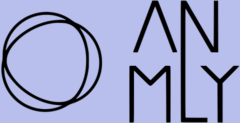ODE TO ECHINOPSIS
No one can be cruel or too shy
for you, blooming hedgehog,
sea urchin on dry land.
You are a living relic, a myth
with all the colors, one with
a tarsier of a flower.
Globose or tubular you
are nothing short of cosmic
with posies this spectral.
Prickly, yes, but what isn’t,
when only you can unclench
secrets from radials of corolla
whether or not anyone’s ready
for your many fanged edges.
Equal parts rhythm and spikes,
you deserve ceremony, eyes.
We will hold you up high
like a trophy or sundial
even if our fingers hurt. For
everything that captivates must
require sacrifice, a little danger.
BIOMIMICRY
In 1989, pushing at around 170 miles per hour, the Shinkansen speeds out of a tunnel as if announced with an explosion. Its exit carries a sound so thick and full that crowns of trees quiver like a thousand boneless fingers. The Japanese then turn to birds to perfect the train: owl feathers for rigs, penguin belly for pantograph, kingfisher beak for frontispiece. Machines continue to stir quieter as man move swifter, as if possessed by the impetus of wind. So what do birds turn to us for? What does kindness owe us when we name our conveniences with violence, comforts with terror, like bullets out of something graceful, alive?
* * *
Abstract I still wish we are kinder, even in a world poorly designed. Statement of the Problem Is it worth pursuing those that evade us? Current State of Technology Perhaps? Perhaps. Objectives Off the coast that could be any other coasts in the world—the Atlantic, maybe, or Bantayan—scientists mimic shark skins to create antibacterial plastic and study patterns of schools of fish to ascertain wind turbine compositions. Meanwhile, the glaciers have lost another monument, and like the death of a star, no one could hear a sound. Theoretical Framework The devil is in the details. As well as in everything we want. Performance Analysis We know too well this deep and subterraneous urge to uncover: this breaking, this peeking beyond the clam’s lips. Conclusion Some pearls must be worth more than the others.
* * *
Sometime in the future, we see cars that are becoming more cars than jaguars or horses or beetles, disbanded across streets like alien urchins. The din takes a different octave all around us. We’ve been here before: Gears and bolts taking over elegant muscle. The symmetry of thoraxes giving way to shellacked hoods. Antennae going wireless. Keyholes becoming the last semblance of mouths to be fed. Listen now. The highways are no longer breathing.

F. Jordan Carnice holds a BA in creative writing from Silliman University and a BSc in information technology from STI. His works are published in Philippines Free Press, Voice & Verse Poetry Magazine, LONTAR: The Journal of Southeast Asian Speculative Fiction, Quarterly Literary Review Singapore, among other places. He has released two poetry chapbooks—Weights & Cushions (2018) and How to Make an Accident (2019). He is also visual artist who is currently based in Bohol with his three cats.

 BACK TO ISSUE
BACK TO ISSUE